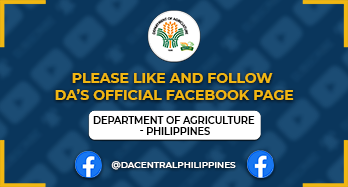
Author: DA-Admin | 4 April 2017
With demand for local seaweed growing in the foreign market, the Department of Agriculture (DA) is seeking to revitalize the industry and help farmers make it competitive and sustainable.
After meeting with Ocean Harvest Technology Ltd. (OHT) Quality and Resource Manager, Dr. Simon Faulker, Agriculture Secretary Emmanuel F. Piñol directed Undersecretary for Fisheries Eduardo B. Gongona to come-up with a roadmap, “ a clearer vision,” for the National Seaweed Program during the Duterte Administration that “will prepare farmers for global market.”
“Also include on the roadmap on how we are going to utilize idle fish ponds in the country,” Piñol said.
Faulkner presented the DA Chief with a proposal that would allow the Ireland seaweed company to pruchase ulva, also known as sea lettuce, which it would send to Vietnam for processing into animal feeds.
The company is eyeing 3,000 tons of dried local seaweed, said Faulkner, while Piñol recommended the establishment of a local seaweed processing facility.
OHT wanted to explore the potential of harvesting ulva in Cebu, Bohol, Pampanga and Tawi-Tawi, after visiting the four provinces last January.
Also found in many coastal areas of Pangasinan, La Union and Ilocos Norte, ulva, although “considered a nuisance, is a good source of minerals and vitamins, which is good in making animal feeds,” Faulkner added.
During the meeting, National Seaweed Coordinator, Irma F. Ortiz, said BFAR wants to revive the country’s status as the world’s leading producer of seaweeds such as Euchema and Kappaphycus, saying, “BFAR aims to increase seaweed production by at least 5% annually from 2017 to 2022.”
Data from the Philippine Statistics Authority (PSA) show that Indonesia surpassed the country’s volume produced in 2008, and a year later produced 2.79 million metric tons, 60 percent higher than the Philippines’ production of 1.73 MMT.
Euchema is used in the production of carrageenan, an important product used in cosmetics and food processing as well as a food source. Both Euchema and Kappaphycus have been the major source of expansion for the carrageenan industry.
BFAR faces major challenges, said Ortiz, identifying some of them as limited access to credit and market, and limited source of alternative income from seaweeds, which is mostly dependent on selling raw dried seaweed.
Ortiz also cited limited research and development on seaweed applications, promotion of available seaweed products, and the lack of sustainable agri-fishery facility in the country.
To address these challenges, BFAR has implemented three key seaweeds programs, namely, MAS SAGANANG ANIHAN (production of climate-resilient species), MAS SIGLANG SAGAMAHAN (entrepreneurship training), and MAS SAGANANG SAMA-SAKANG KALAKALAN (promotion of community-based product champions).
The agency has also sought assistance, Ortiz said, from the Department of Science and Technology (DOST) and Department of Trade and Industry (DTI) in crafting the roadmap and in research on the development of ulva as biomass.
The roadmap, Piñol told BFAR, must suggest a clearer vision during the Duterte administration.”# (Kristel Merle, DA-AFID)
Reference:
Irma F. Ortiz
National Seaweed Coordinator
BFAR, National Seaweeds Development Project
Contact No. 02-3516814
Information and Public Relations Group, BFAR
Telefax: (02) 454-5863
Mobile Number/s: 0917-8914233
Website: www.bfar.da.gov.ph/
Mobile Number/s: 0917-8914233
Website: www.bfar.da.gov.ph/














